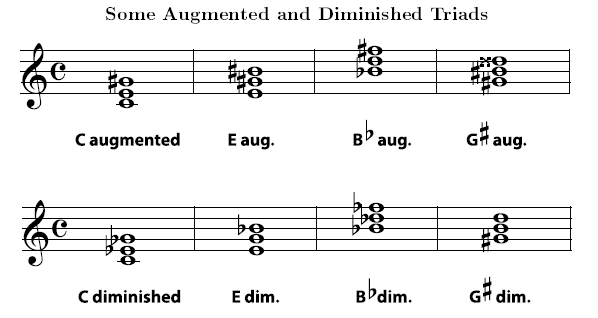Because they don't contain a perfect fifth, augmented and diminished chords have an unsettled feeling and are normally used sparingly. An augmented chord is built from two major thirds, which adds up to an augmented fifth. A diminished chord is built from two minor thirds, which add up to a diminished fifth. Listen closely to an augmented triad and a diminished triad.
Example

Exercise 5.5:
Write the augmented triad for each root given.

Exercise 5.6:
Write the diminished triad for each root given.

Notice that you can't avoid double sharps or double flats by writing the note on a different space o r line. If you change the spelling of a chord's notes, you have also changed the chord's name. For example, if, in an augmented G sharp major chord, you rewrite the D double sharp as an E natural, the triad becomes an E augmented chord.

You can put the chord in a different position or add more of the same-named notes at other octaves without changing the name of the chord. But changing the note names or adding different-named notes, will change the name of the chord. Here is a summary of the intervals in triads in root position.

Exercise 5.7
Now see if you can identify these chords that are not necessarily in root position. Rewrite them in root position first if that helps.

- 16319 reads






